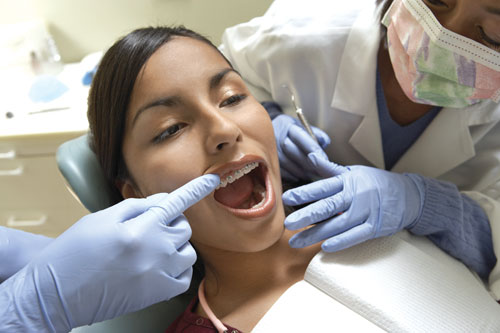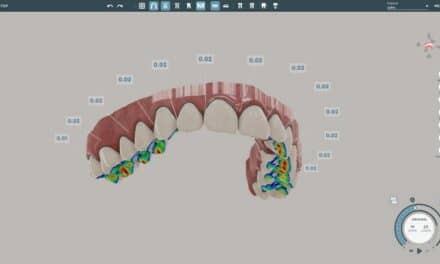Applying the DiSC behavioral assessment in an orthodontic office
By Neal D. Kravitz, DMD, MS
The DiSC theory, or simply DiSC, is a popular classification system originating in the 1920s that categorizes all individuals into four primary behavioral types or temperaments: D-Dominant; I-Influential; S-Steady; and C-Conscientious. The aim of the DiSC theory was to categorize people by behavior in order to improve their interpersonal relationships. Today, DiSC has evolved from a simplified classification system to a thorough assessment tool used by small businesses, corporations, schools, government agencies, and religious institutions all over the world attempting to better understand individual behavior.
The purpose of this article is to review DiSC and apply its use in an orthodontic office. A better understanding of common behavioral types may increase case closure rate, highlight which patients may be challenging to treat, and aid in hiring the appropriate staff.
Background
In 1928, American psychologist William Moulton Martson, PhD, introduced his DiSC Model of Behavior in his book Emotions of Normal People. According to Marston, there exist four primary behavioral types or temperaments, originally labeled as: Dominance (D), Inducement (I), Submission (S), and Compliance (C). All individuals could be classified into one of these four categories. Marston was interested in using simple explanations regarding behavioral tendencies to help others manage their interpersonal relationships.
Nearly 3 decades after the introduction of the DiSC Model of Behavior, industrial psychologist Walter V. Clarke built a personality profile test based on Marston’s theories. Clarke’s writing, the Activity Vector Analysis, published in 1956, was an assessment instrument intended to help businesses select the appropriate personnel. In the 1970s, psychologist John Geier, PhD, further expanded the work of Clarke to create the Personal Profile System (PPS), which is the basis for the modern DiSC model.
The Four Behavioral Types of DiSC
D-Dominance or Drive. “D” stands for dominance. It also stands for direct, driven, determined, decisive, and doer. Dominant behavioral types are strong-willed, persistent, and independent thinkers. These individuals relate to control, power, and assertiveness. High D-personalities are demanding, forceful, egocentric, ambitious, aggressive, and original. They enjoy solving problems and achieving goals. As such, they make decisions quickly and are impatient with people who “waste time” thinking things over.
They read the instructions only as a last resort. They are willing to take risks to challenge the status quo, even if it means breaking rules along the way. They always stand out from the crowd and are often a leader in their respective field. They bore easily, frustrate quickly, and get over it even faster. When frustrated, a dominant behavioral type can be a handful. They may be blunt, short-tempered, and inconsiderate of other’s feelings. Simply put, they are concerned about results, and they want them now. A D-personality is “ready-fire-aim.”
I-Inducement or Influence. “I” stands for influential. It also stands for inspiring, impressive, interesting, and interactive. Influential behavioral types are optimistic, super-friendly, energetic, and extroverted. These individuals are social beings. They have a large circle of friends, and they want people to like them. They are inspirational and fun. They truly like working with others and meeting new people.
Influential behavioral types put others before themselves. Unfortunately, these individuals are focused more on people rather than tasks. They favor relationships over authority and thus, tend to ignore the rules. When overwhelmed, they tend to lack follow-through and fail to deliver on promises. They rely on their relationships and their ability to talk their way out of trouble. At their worst, they may even appear superficial. In summary, they are concerned about relationships. An I-personality is “ready, aim, fire.”
S-Submission or Steady. “S” stands for steady. It also stands for supportive, submissive, sympathetic, stable, and shy. They are quiet, friendly, and very loyal. They have a small circle of very close friends. These individuals relate to order. They are peace seeking and strive for consistency.
Steady behavioral types are patient and persistent. They enjoy creating a calm and harmonious environment. They enjoy having clearly defined rules and expectations. They thrive on instructions, and they will never challenge the status quo. They do not stand out in the crowd. They prefer to follow and not lead, even though they have the skill set to do so.
They are very intelligent. However, they may have difficulty with sudden change. When stressed, they can be very hard on themselves. They may also bottle up their feelings or disagree passively rather than speak their mind. In summary, they are concerned about the process. A S-behavioral type is “ready-aim-fire.”
C-Compliance or Conscientious. “C” stands for conscientious. It also stands for cautious, concerned, careful, calculating, correct, and contemplative. These individuals are slow, critical thinkers. They have incredibly high standards and too often unrealistic expectations. They are fair, objective, and determined to do things 100% correctly the first time.
Conscientious behavioral types are analysts who research every aspect of a situation before making a decision. They always read the fine print. These individuals relate to quality, accuracy, and infinitesimally small details. They will not compromise their values or quality of work despite outside pressures.
They enjoy having access to information, investigating a problem, and being right. C-behavioral types seek absolute perfection and often display obsessive-compulsive disorder. As such, they suffer from analysis paralysis, overwhelmed with the minutiae that they have researched. A C-behavioral type is “I’m not quite ready!-aim-fire.”

Figure 1: Four-quadrant DiSC model. The top row represents outgoing personalities, whereas the bottom row represents reserved personalities. The left column represents task-focused personalities, whereas the right column represents people-focused personalities. The left column also indicates patients who may be more challenging to treat.
Four-Quadrant Model
These four behavioral types can be grouped into a four-quadrant grid to highlight similarities (Figure 1). In the grid, D- and I-behavioral types share the top row from left to right, representing faster-paced, extroverted personalities, while C- and S-behavioral types share the row below from left to right, representing slower-paced, introverted personalities. D- and C-behavioral types share the left column, which represents task-focused priorities. I- and S-behavioral types share the right column, which represent people-focused priorities.
Furthermore, individuals can demonstrate behavior traits across the grid. For example, an orthodontist may have a D, I- behavioral type if he is strong-willed, independent, assertive, decisive, focused on the bottom line, animated, talkative, creative, enthusiastic, and persuasive. This orthodontist may be classified as high-D/I- or D/ high-I, depending on which traits are predominant. Therefore, the four-quadrant model should be viewed as a visual framework used to further simplify the primary behavioral types, rather than a rigid box to define an individual.
Applying DiSC to the New Patient Consultation
The orthodontist can quickly apply the DiSC classification system during the initial consultation by looking for visual cues. DiSC should be applied to the “decision-maker,” such as the parent of the child needing braces or the adult patient seeking treatment for themselves. Classifying new patients by their behavioral type may help in better addressing their needs and increase the likelihood that they will start treatment.
The Dominant Patient (D). In your office, the dominant patient is a “Loud-mouth Louie.” They appear in a rush. They will storm to the front desk and announce to everyone in your waiting room that their appointment time started 10 minutes ago. They can be aggressive, blunt, impatient, and intimidating. The orthodontist may find these individuals busy working on their laptop or pacing the office while talking on their cell phone.
During an initial consultation with a D-behavioral type, the orthodontist should support the findings without wasting the patient’s time. Do not approach D-personalities casually or spend too much time on small talk. Quickly establish expertise and provide them with the information to make an immediate decision, and then get out of their way. Be specific, concise, and professional. Most importantly, let them speak. The D-behavioral type does not talk with you; rather, they talk to you.
For the prepared office, it is very easy to close a D-behavioral type during the initial consultation. They are ready to make a decision quickly. The downside is that they are often challenging patients to schedule, as they only want to be seen when it is convenient for them. However, once a proponent of your services, they will be your most vocal ambassador.
The Influential Patient (i). The influential patient is a “Chatty Cathy.” They are casual, personable, loving, fun, and hip. Their presence is immediately felt when they arrive. The orthodontist may find these individuals gabbing to their friends in the waiting room who are current patients or engaged in social media.
During an initial consultation with an I-behavioral type, the orthodontist should focus on making an emotional connection. Small talk is very important. Consider spending a few moments asking them about their day, future holiday plans, a nice piece of apparel they are wearing, or their favorite activities. Be friendly, energetic, and upbeat. Don’t be surprised if they address you by your first name. Most importantly, show them how much you care before telling them how much you know. Establish rapport before the chore.
All effort should be made to start I-behavioral types, as they are integral to the growth of your practice. They will make you love coming to work every day. There are very few challenges with I-personalities. However, they may occasionally forget their appointment times. Unlike D-behavioral types, scheduling appointments for I-behavioral types is much easier as these patients are more flexible. After treatment, they are the best patients to ask for an online review, as they are often profuse with their praise.
The Steady Patient (S). The steady patient is a “Plain Jane.” They are soft-spoken, academic, indirect, and casual. They are quiet and modestly dressed. Their children may be homeschooled or attend private schools. The orthodontist may find these individuals quietly reading a book while they wait.
During the initial consultation with a S-behavioral type, the orthodontist should talk less and listen more. This may be challenging, as these individuals are soft-spoken and good listeners themselves. Focus on how orthodontic treatment will improve function and oral health, as they may be less concerned with the esthetic benefit of braces. Additionally, they many ask many questions regarding the nuances of their braces or their orthodontic treatment. Anticipate these questions without showing frustration. Now is the time to be a teacher. Educate without revealing bravado.
S-behavioral types are very good patients who will follow your treatment plan. These patients may require a little more personal attention and patience. After the orthodontic visit, they may ask for the orthodontist to thoroughly explain what was done at today’s visit. They are often very easy to schedule because they want to come in when the doctor says is the best time. Oftentimes, they prefer the quieter pace of the morning. Though less gregarious than I-behavior types, S-behavioral types will strongly recommend their close network of friends to your office.
The Conscientious Patient (C). The conscientious patient is a “Nervous Nelly.” They are educated, anxious, meticulous, and concerned about quality rather than cost. They are often impeccably dressed. Prior to the consultation, they may take an unusually long time to complete their health history form and check off multiple contributory health factors. The orthodontist may find these patients closely examining their teeth with a hand mirror, reviewing multiple self-taken photos of their smile on a smartphone, or carrying a notepad containing pages of prepared questions.
During the initial consultation with the C-behavioral type, the orthodontist should show patience, as they will have many questions. C-behavioral types may be more concerned with the esthetic benefit of braces, compared with S-behavioral types. However, this is not always the case. They simply want “what’s best!” Be very specific with your treatment objectives. Adult patients may respond very well to Invisalign therapy due to the simplicity of treatment. Be forewarned that oftentimes more than one consultation is required to answer their multitude of questions and hypotheticals.
C-behavioral types are very hard patients to make happy, and in turn, treating them may make you unhappy. However, turning away these patients is not as easy as it sounds. Their unique personality traits have made them successful in their careers, and therefore, they have the means to pay for treatment in full. Furthermore, ego will want to start their case as they have researched your office on the Internet and shopped around to many of your competitors. However, treating C-behavioral types is rarely profitable and oftentimes never worth the added stress to your workday.
Orthodontic appointments with C-behavioral types require lengthy doctor chairtime in order to soothe their anxieties and address their laundry list of concerns. Additionally, active treatment time extends beyond the estimated duration, as the orthodontist has to address each “emergency” at every appointment. Their treatment is slow, frustrating, and debilitating. They will walk back into your office 15 minutes after leaving for additional minor adjustments. These individuals will send you two-page emails at two o’clock in the morning with a list of concerns and goals for the following appointment.
Oftentimes, multiple debanding appointments will need to be scheduled, as the patient is never quite ready to get their braces off. To satisfy these patients, focus on rapport, not simply moving a tooth a fraction of a millimeter. They require psychological and emotional support more than orthodontic alignment. However, once pleased with your services, they will be devoted customers for life.
In a recent article1 by orthodontist and legal expert, Laurance Jerrold, DDS, JD, the author reviews the story of an orthodontist who has terminated treatment on a difficult patient who displays the traits of a high C-behavioral type. Jerrold writes:
From the doctor’s perspective, many of us have encountered patients who come prepared with a pad of paper and a pen, and then proceed to write down every word we utter whether at initial screening, during the consultation visit, or even conversations at chair-side during treatment. When this happens, yellow caution flags should go up all over the place. Patients who conduct themselves in this manner often focus on minutiae, don’t really understand the greater picture, misinterpret the “dentalese” language, and play outside commentary against what we are telling them. To all of you patients out there, if you want to drive us nuts, this is one way to do it. When we encounter patients like this, once we have accepted them into our practice (we almost always do because we think we need the money), we wish we had been smart enough to see what was to come. Retrospectively, we realize that we should have told them to go to someone else—perhaps that colleague down the block who we dislike so much.

Figure 2. Incorporating DiSC during the initial patient consultation and selection of your office team. (Click to enlarge)
Applying DiSC to Office Personnel
Most orthodontists have unknowing applied DiSC theory to their office personnel, placing employees in specific roles based on intuition. The orthodontist may decide whether a new-hire is better suited for the front desk or the back staff based on how the staff member might perform their duties, engage patients, and interact with other members of the team. These instincts are essentially behavioral classification.
D-behavioral type employees thrive on the speed of a busy orthodontic practice. They prefer leadership roles and responsibility. However, they are also sensitive to supervision, which they may interpret as micromanagement. They do not like having their suggestions overruled. These individuals often display “diva” mentalities, demanding special treatment for their increased level of expertise. Dominant employees are highly skilled and also highly confrontational.
A low D-behavioral type may be an excellent employee given the right environment—for example, a front desk administrator who operates as a business manager or an experienced orthodontic technician who is given the responsibility of overseeing the rest of the back staff. An orthodontist with a D-behavioral type should be cautious of hiring an employee with a strong D-behavioral type who may choose to challenge authority.
I-behavioral type employees relish the social interactions at an orthodontic office. They enjoy engaging patients, working with others, and using their creativity on new assignments. However, they may have trouble working independently and tend to bore when performing a rigid work routine. They may be overly sensitive to constructive criticism if it occurs in public. Influential employees are highly social and highly dramatic.
Orthodontists traditionally gravitate toward hiring I-behavioral types for their treatment coordinators and orthodontic technicians due to their positive energy and infectious smile. An office full of these individuals would certainly make for a fun bunch. Caution should be given with hiring more than one or two high I-behavioral types. At their worst, they may be emotionally immature, tend to gossip, and side against you if another staff member is being reprimanded. Loyalty is not their strength.
S-behavioral type employees excel on following office protocol. They do not use “their own method” for doing things. They are hard-working, loyal, and pleasant. They never cause drama. However, these individuals may lack the social presence or “mommy factor” that patients crave. Do not force these individuals into a vocal leadership role as they may have trouble speaking their mind to another. Steady employees are soft-spoken, dependable soldiers.
S-behavioral types make tremendous employees. They will be accountable, reduce office drama, and grant you peace of mind. Consider S-behavioral types for office administrators in charge of accounts receivable, sterilization technicians, or laboratory assistants. For positions that require more social interaction, such as orthodontic technicians, front-desk concierges, and treatment coordinators, consider S/I-behavioral types.
C-behavioral type employees thrive in analytic positions at the office that require attention to detail. These individuals are procedure-oriented, focused, and like to get right down to business. They excel at research. Do not surprise them with big changes, as they may not cope well. They overreact at small problems, which they view as major catastrophes. A high-C behavioral type may appear anxious, hypercritical, or uncertain at times, which may not fit into a team model.
C-behavioral types may make acceptable employees if given a less social role that values precision. For example, a C-behavioral type may thrive as a front desk administrator in charge of insurance claims, OSHA, and accounts receivable (Figure 2).
Applying the DiSC classification system may improve the new patient experience during the initial consultation and aid in hiring the appropriate staff. I-behavioral types are the most pleasant patients, whereas C-behavioral types may be the most challenging. When treating a C-behavioral type, focus on establishing the strongest level of rapport rather than becoming frustrated with their requests for minutiae. Though orthodontists commonly gravitate toward hiring I-behavioral types, S-behavioral types make pleasant, loyal, and low-drama employees.
Afterword
Dr William M. Marston, also known by the pen name Charles Moulton, was quite the polymath. In addition to his work on behavioral theory, he was a prominent author, defender of women’s rights, inventor of the systolic blood pressure test, and most notably, comic book writer who created the character “Wonder Woman.” Interestingly, the Amazonian princess was a symbol of feminism with deep psychological undertones based on Marston’s earlier research on DiSC. Wonder Woman was strong-willed (D), creative (i), affectionate (S), and diplomatic (C). She brought a unique human complexity of behavioral traits to the superhero world.
Today, Marston’s DiSC model of behavior continues to evolve but remains a valuable tool for businesses. It allows individuals to better understand their behaviors, employers to better leverage the strengths of their team, and even orthodontists to better select appropriate patients or hire the right personnel for their office. DiSC is a Lasso of Truth that grants all who use it powers of behavioral assessment. OP

Reference
1. Jerrold, L. Problems of our own making: A view from both sides of the coin. Am J Orthod Dentofacial Orthop. 2012;142:734-738.






